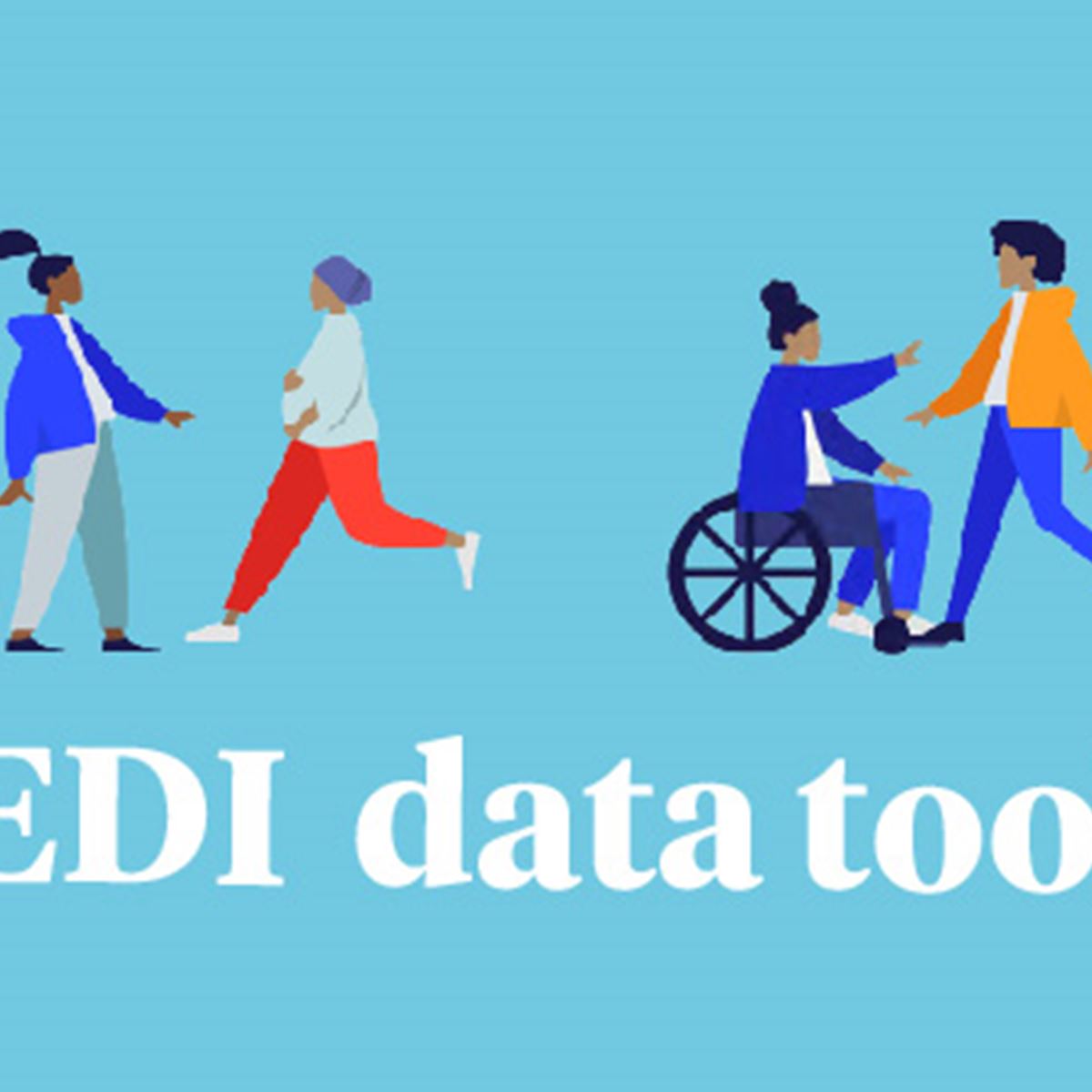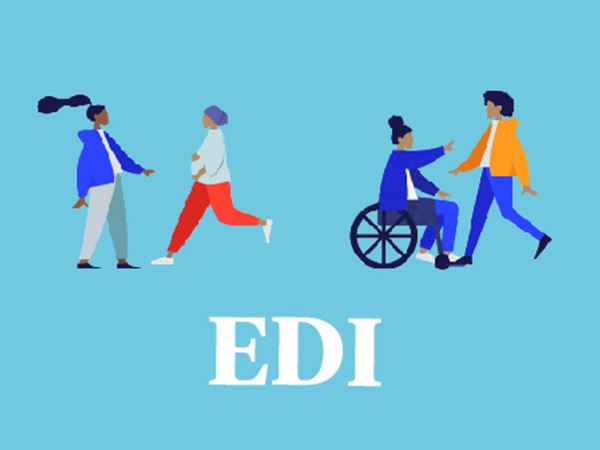EDI data tool: comparing your workforce to your local community
We’ve been working with our EDI in Housing member group to drive progress towards a more equal, diverse, and inclusive housing association sector.
Our ambition is to drive progress towards a culture of inclusivity, inspiring equality across our sector and diversity in leadership roles. This will allow better business decisions and ensure our people flourish, building greater trust within our communities and workforces, and attracting new talent to our sector.
Monitoring workforce diversity: what to ask and how to use the data you collect
We have put together a resource to support our suggested questions to ask your workforce. It breaks down the wording of each question, why it's asked and how you can use the data you collect.
Find out more
Why is EDI important?
In November 2020, the NHF launched our insight review on Equality, diversity and inclusion (EDI) in housing association staff in England. This looked at the current EDI landscape of housing staff across the country.
The insight review showed huge gaps in our knowledge and exposed that where we do have EDI data, just how far we have to go. As such, part of our work on EDI in housing has focused on improving and understanding data on EDI. We need to know where we are in order to know where we want to be and to be able to measure our progress.
By supporting the sector to better understand the diverse characteristics of their communities, and how their workforces compare to them, we are helping the sector form a solid foundation for ensuring our leadership is diverse, and that housing association workplaces embrace equality.
Diversity benefits
There is a strong moral case for equality, diversity and inclusion. Our insight review also highlighted the business case - diversity within a workforce improves the performance and productivity of organisations. People trust leaders that reflect the diversity of the people they lead, the customers they serve, and the communities in which they are rooted.
Talent can be found all around us and attracting it from the widest pool possible creates competitive advantage – as a sector, by not being as diverse as we could be, we are missing out on talent.
What is the EDI data tool?
This tool, designed and developed by the NHF, enables housing associations to compare workforces to the communities they serve, based on population in stock location. It looks at all nine protected characteristics as well as caring responsibilities and socio-economic background. The tool is easy to use and provides a great place for any housing association to start, or continue, a conversation about diversity. It also allows organisations to create action plans and strategies, and to measure the impact of actions over time.
Members can download the NHF's EDI data tool below – please note you must be an NHF member and logged in to the website to access this. Anyone working for an organisation that is an NHF member can register and login using their work email and our system will automatically grant access.
How does the EDI data tool work?
When housing associations identify themselves from a drop-down menu, the spreadsheet automatically pulls together their owned or managed stock by local authority. It then uses this to summarise the diverse characteristics of people who live in stock locations, using existing national datasets. So, while it is not the exact resident data, it is a speedy way of gaining a greater understanding of the diverse characteristics of those living in and around their homes.
Housing associations can then type in their workforce diversity data to compare workforce to population in stock location for all nine protected characteristics, as well as caring responsibilities and socio-economic characteristics. There is also an opportunity to compare executive to staff, board to staff, and customer to workforce for all key characteristics.
There are instructions on how to complete it within the tool itself. We have also provided a step-by-step guide which may be helpful for those completing it for the first time.
If you need more information about your staff, we have put together suggested questions to help complete the tool. We have also created a resource breaking down the wording of each question, why it is asked, and how to use the data you collect.
For further information about the tool and how to use it, please refer to our commonly asked questions.
Collecting housing associations’ EDI data
In 2023, we repeated our EDI data collection exercise to give an updated picture and recommendations for driving change. The EDI national data report analyses data submitted by 177 organisations, representing 76% of homes owned by housing associations in England.
Our findings and recommendations were published in our latest report: How diverse is England’s housing association workforce in 2023?
While gaps remain, we have more complete data on the characteristics of the housing association workforce, executives and boards than before. This updated picture shows where our sector has made small steps in the right direction but also where progress is still too slow.
The NHF and Chartered Institute of Housing (CIH) published our action plan to tackle poor quality in housing in response to the Better Social Housing Review, and the EDI data tool was cited throughout as one of the ways to tackle structural inequalities.
This report provides a detailed analysis of where change is happening, where it has been slower, and what’s still required. Together, we can build a truly inclusive and representative sector. By maintaining momentum, sharing best practice, and working collectively, we want to see bolder action and accelerated progress across all areas before the next data collection in 2026.
What updates were made to the 2023 EDI data tool?
We made some improvements to the functionality. These include automatic calculation of staff figures in the Executive and Board tabs, calculation of percentages excluding don’t know and prefer not to say and a space on each tab to allow people to add notes.
For the majority of questions within the updated tool, we used Census 2021 data to tell us the characteristics of the population by stock location. The census provides a picture of all people and households in England and Wales and using this data ensures the tool is as accurate and up-to-date as possible.
We also adapted the wording of some questions to be in line with the latest census results and to ensure we’re asking them in a way that generates the best answers from respondents.
Questions that remained the same as the previous iteration of the EDI tool:
Questions that changed for 2023:
- Sex and gender are split so we have separate questions under each category.
- The answer options under the Ethnicity category have been updated with the categories taken from Census 2021, and the question is now based on the harmonised standards.
- The disability category has been updated and now consists of two questions which the Office for National Statistics has found prompts the most accurate response rate.
- Questions in the categories of marital status and living arrangements, religion and sexual orientation have all been updated slightly in line with Census 2021.
Please see the Notes tab on the EDI data tool (download below) for further information about how we designed each question and the data sources used for comparison with population by stock location.
We are continuously looking at the terminology we are using to ensure the tool is as inclusive as possible, whilst also enabling us to benchmark against existing data about the characteristics of the wider population. We welcome any feedback about how we could improve future tool iterations, please email research@housing.org.uk.
Access our EDI data tool
To access our EDI data tool you need to log in below, but please note it's only available to NHF members.
This is the latest version of our 2023 EDI data tool uploaded on 13 May 2024. We recommend using this version to compare your workforce against the communities you serve, set targets and measure progress over time.
Member only
Please login to access this member only content.











